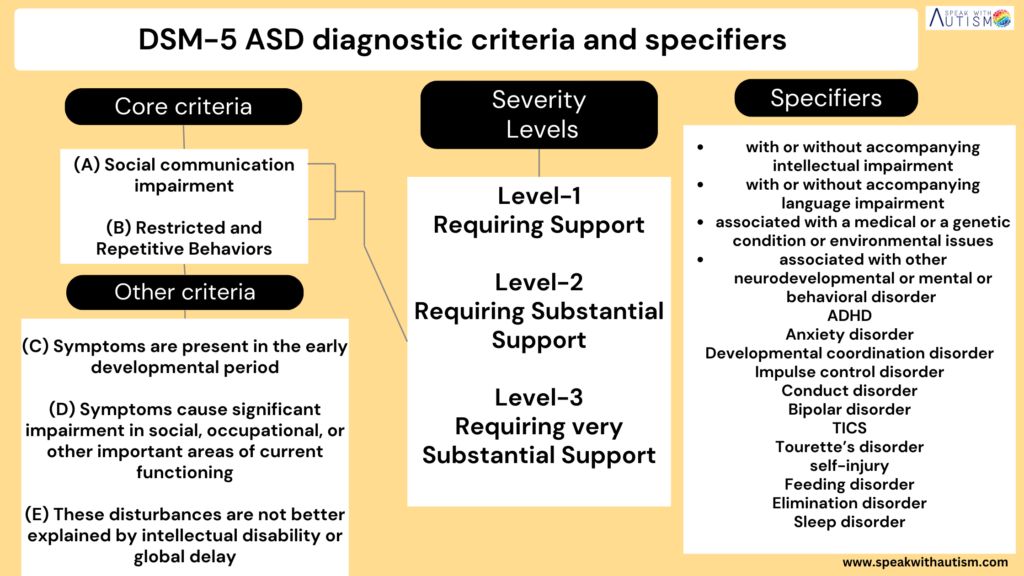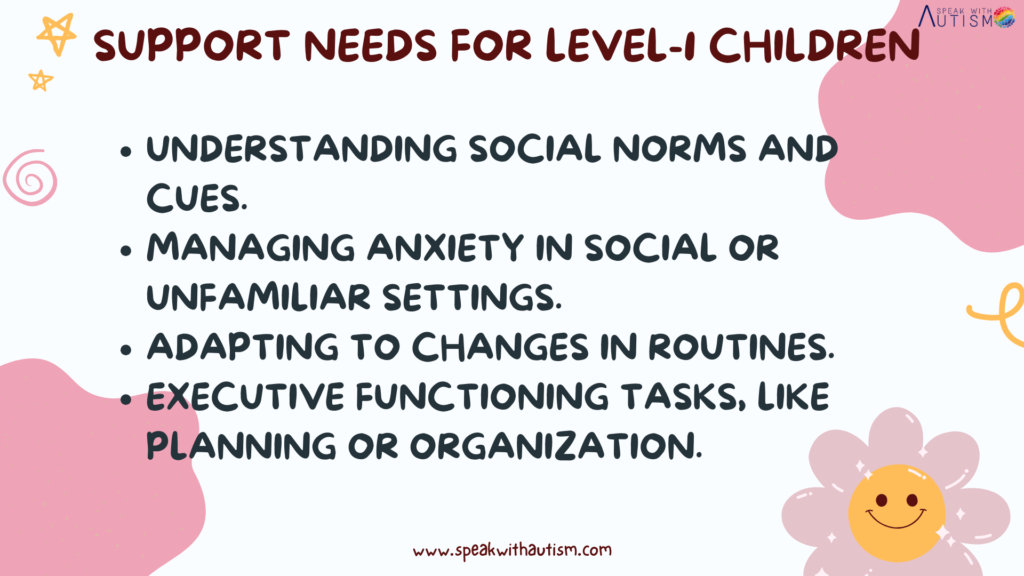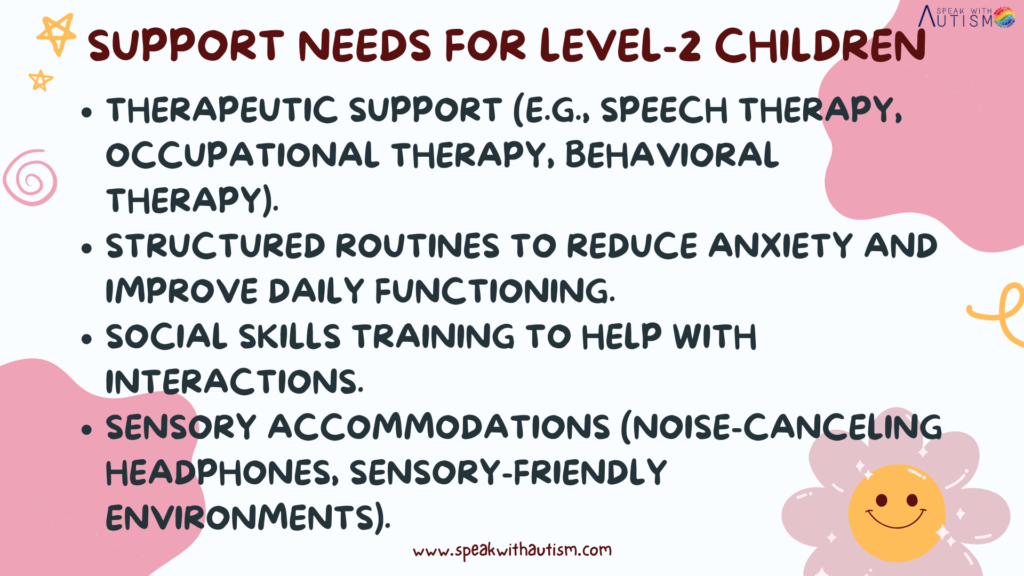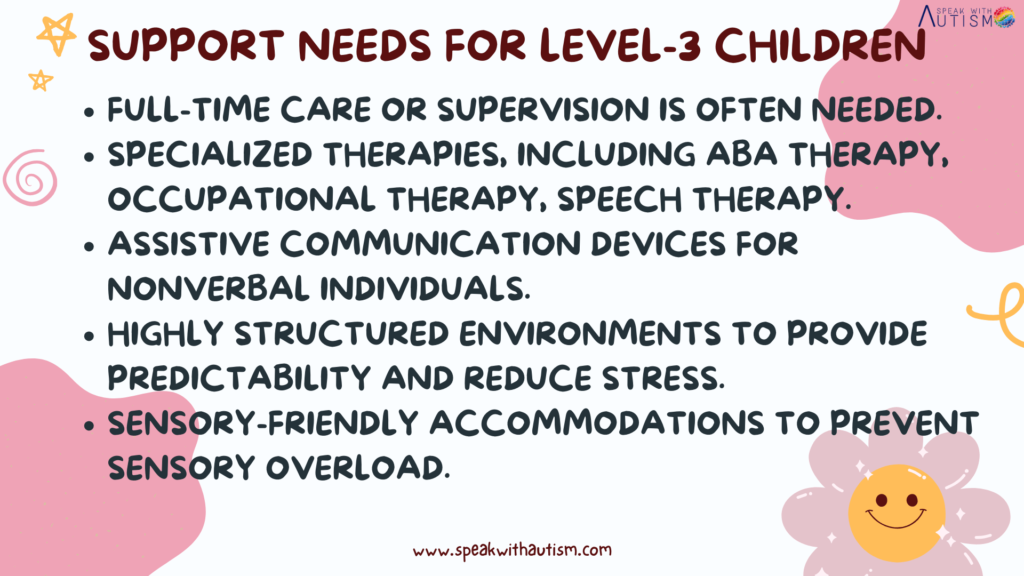Autism levels: Autism spectrum disorder (ASD) is a neurodevelopmental condition that impacts social interaction, communication, and behavior. However, symptoms of autism may vary from person to person. Hence, it has been divided into three levels based on DSM-5 to understand how much support a person needs.

Table of Contents
3-Autism levels
Level 1: Minimal support needed
This is also called “high-functioning autism“. People at this level can usually function independently, but may have difficulties in social interaction and communication.
Key symptoms:
✅ Difficulty understanding social situations
✅ Feeling uncomfortable with changes in routine
✅ Repeatedly discussing the same topic of interest
✅ Mild sensory sensitivity

How can I help?
- Social Skills Training
- Behavioural Therapy
- Sensory Integration Therapy
Level 2: Moderate level of help needed
People at this level have more difficulty communicating and understanding social situations. They may need regular help and special education.
Key symptoms:
✅ Limited social interaction and difficulty expressing emotions
✅ Extremely repetitive actions or phrases
✅ High sensory sensitivity (discomfort from loud noises, light, or touch)
✅ Difficulty controlling emotional responses

How can we help?
- Speech therapy and behavioral therapy
- Structured routine
- Special education and therapy
Level 3: Intense level of assistance needed
This is the most severe level of autism, in which the person needs significant assistance in daily life.
Key symptoms:
✅ Extreme difficulty speaking and communicating
✅ Avoidance of or lack of interest in social contact
✅ Severe sensory sensitivity (discomfort to touch, sound, or light)
✅ Extreme repetitive behaviors and self-harm tendencies

How to help?
- Special care and ongoing support
- Alternative communication methods
- Medical therapy and mental health support
Conclusion
Autism is a spectrum, and each person has different needs. With the right diagnosis and support, people with autism can lead full and satisfying lives. If you or someone in your family is affected by autism, their life can be improved with the right information and therapy.
Frequently Asked Questions (FAQ’s)
How many levels of autism are there?
Autism is usually divided into three levels:
Level 1 – Minimal assistance required
Level 2 – Moderate assistance required
Level 3 – Intense assistance required
What is Level 1 Autism?
Level 1 autism is also called “high-functioning autism”. People with this level can live independently, but have difficulty in social interaction and communication.
🔹 Main symptoms:
Difficulty understanding social situations
Excessive focus on limited interests
Feeling uncomfortable with sudden changes
🔹 Methods of help:
Social skills training
Behavior therapy
Sensory therapy
What is level 2 autism?
People with level 2 have more social and communication difficulties. They need special help and therapy on a regular basis.
🔹 Main symptoms:
Difficulty expressing emotions
Extremely repetitive behavior
Sensory sensitivity (trouble with noise, light, or touch)
🔹 Methods of help:
Speech therapy and behavior therapy
Structured routine
Special education and therapy
What is Level 3 autism?
This is the most severe level, in which the person needs significant assistance in daily life.
🔹 Key symptoms:
Extreme difficulty or complete inability to communicate
No interest in social interaction
Self-harming tendencies
Extreme sensory sensitivity
🔹 Methods of help:
Ongoing care and medical assistance
Alternative communication methods (e.g., picture cards or text-to-speech devices)
Medical therapy and mental health support
Can people with autism lead normal lives?
Yes! With the right support, education, and therapy, people with autism can lead a happy and independent life.
